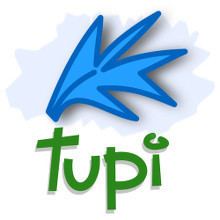Original author(s) Type Animation software | Written in C++ | |
 | ||
Developer(s) Gustav González and Erika Acero Stable release 0.2 revision git08 (Beraba) / August 2, 2016; 7 months ago (2016-08-02) Operating system | ||
Tupi 2d animation program recomendation
Tupi (formerly KTooN) is a software application for the design and creation of 2D animation. This tool, inspired by and for animators, is being developed by an open community. It is covered under the terms of the GNU General Public License v2, meaning that Tupi is free and open-source software. After Tupi was forked from KToon, KToon's official website was changed to redirect to the website for Tupi.
Contents
History
The project began in Cali, Colombia in 2002 as an initiative of two young animators working at the Toonka Films and Soluciones Kazak companies. They were looking to create software that would encourage the evolution of the incipient 2D animation industry in Latin America at that time. From the beginning of the project they determined that the application would have to be open and portable to as wide a range of operating systems as possible. Initial priority has been given to open source platforms like Linux based distros. During this first planning phase, the name KTooN was chosen for the software, the first interface designs for the application were made and the Qt framework was selected as the main library for programming the software.
During the same year the project applied for and received a grant from Colciencias, a public entity of the Colombian government dedicated to the promotion of science and technology. This grant sponsored KTooN's development for the first year, supporting a team of two programmers and one consultant. During this first cycle the project's website was published at the original KTooN website, and the first release (version 0.7) was published.
In 2003, looking for new sponsors, the project applied to SENA, a Colombian government institution dedicated to public education. The project received a grant that sponsored KTooN for another year of development with a team of programmers similar to that of the first cycle. Release of version 0.8 was completed and the project started gaining popularity with users around the world.
Unable to secure further funding, the project was dormant for three years, until 2009. In 2009 the original creators of, worked with a company called Labtoon SAS to continue the project, with the intention of making it the premier project of its type. In the middle of 2010, the Ktoon website was announced and version 0.9 of the software was released. There was a considerable re-design made to the graphical interface. A new website, resource, forum, and public bug tracker were made to better serve the user community.
The funding of the project in its third cycle is based on donations made from the community through the Internet.
Tupi
In 2011 developer Gustav Gonzalez forked KToon, naming his fork Tupi after the Tupí people of Brazil. In 2013 Tupi ran a fundraising campaign to boost development and help complete version 1.0 of the project. In 2014 ran another project to help port Tupi to Windows. Currently, Tupi has several references in some of the most popular sites related to 2D animation software as an intuitive and easy-to-use tool for children, teenagers and amateur artists.
Features
One of the main objectives of this project from the beginning has been to provide an easy user experience, starting at the design of the GUI which allows the creation of simple animations in only 5 steps.
Despite still being in early development, the software includes many features:
Future Development
The goal of being a tool for introducing novice digital artists to the world of animation was fulfilled with the first releases. Development is focused on reaching a professional level that will allow advanced users to make professional-quality animations.
Some of the areas of future development include: particles, sound support, key frames, and morphing. Plans have also been made to have skeleton animation with bones, inverse kinematics, and pivots.
